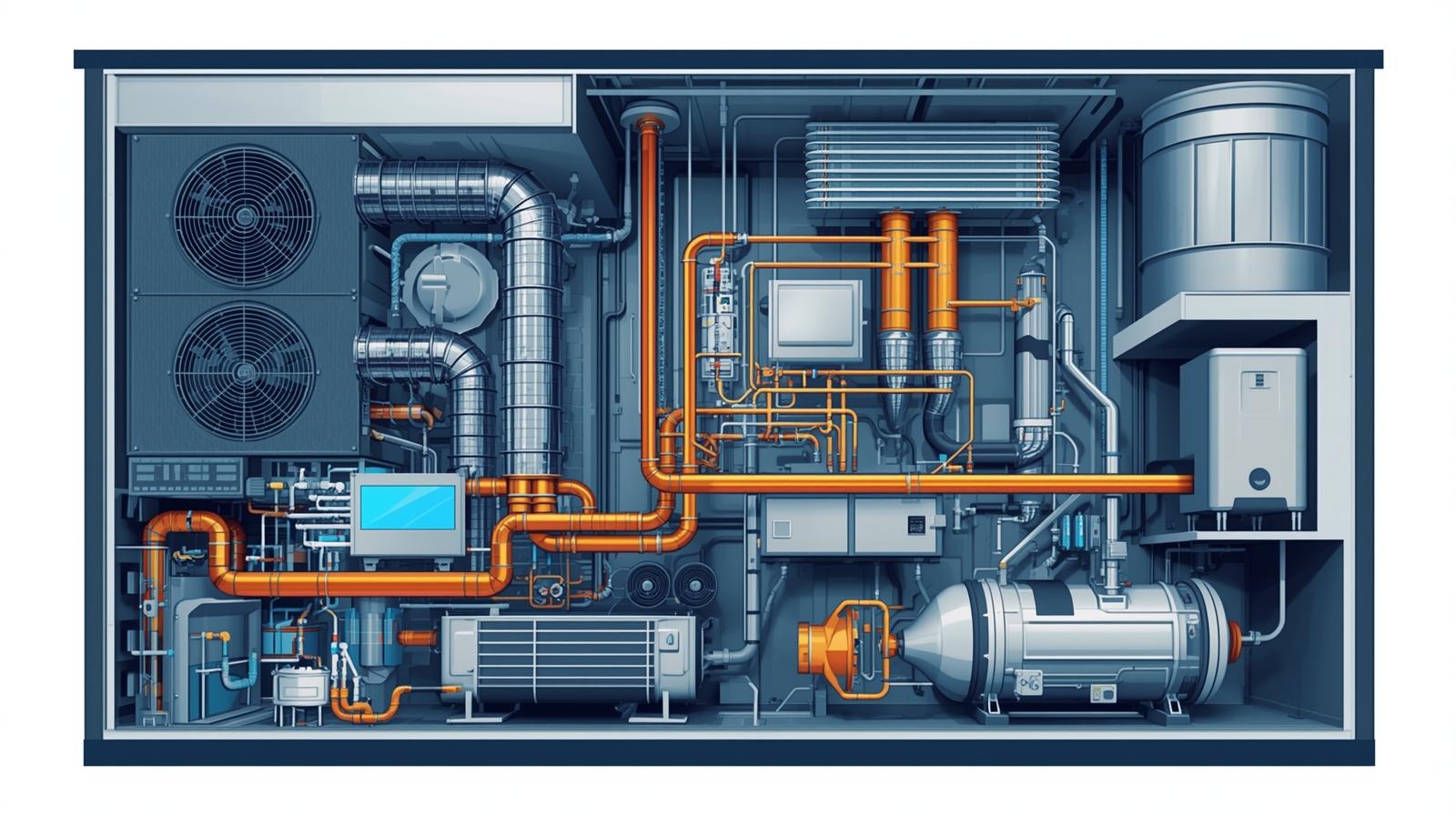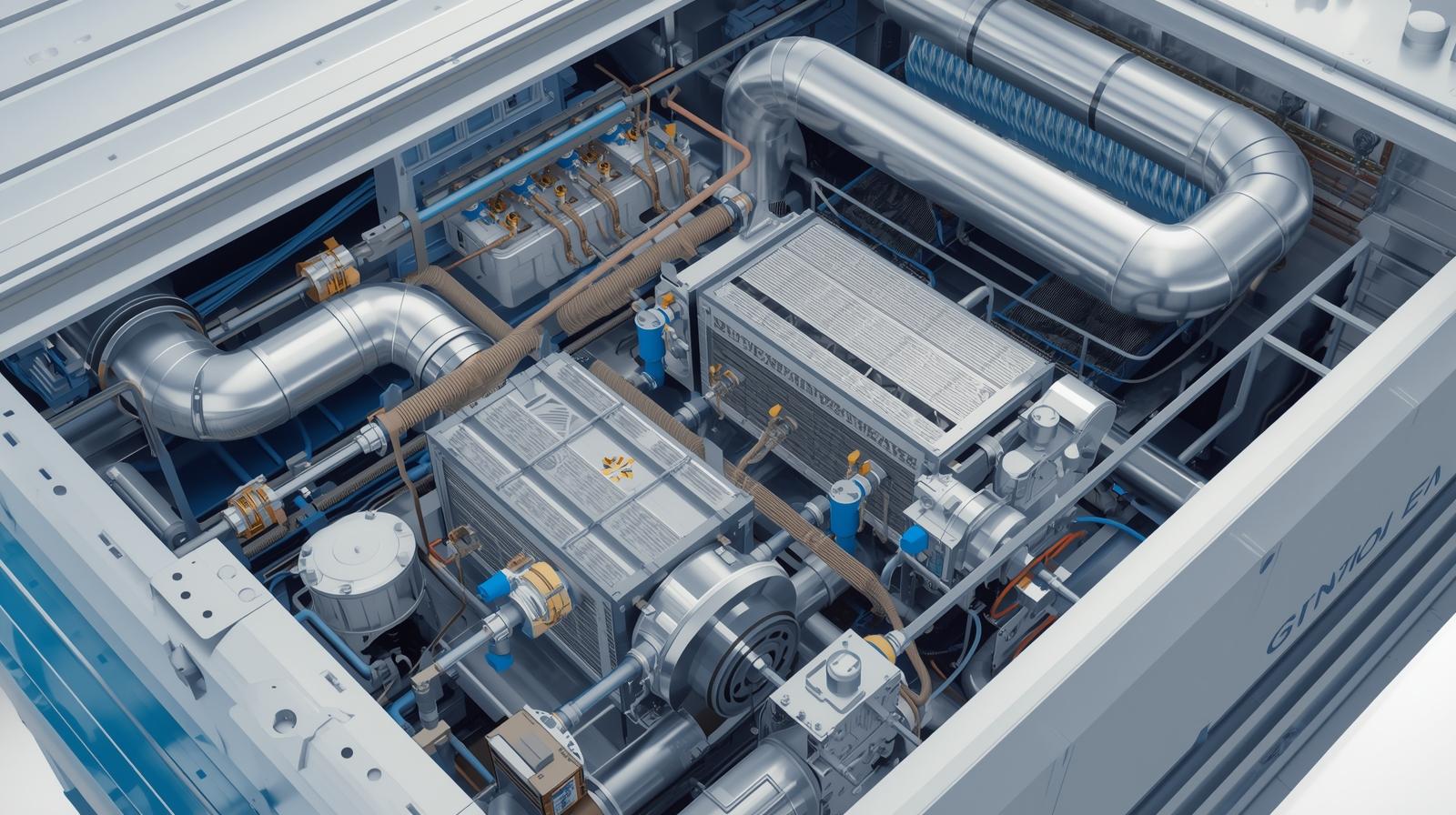The humble Heating, Ventilation, and Air Conditioning (HVAC) system, long considered a static utility, is undergoing a radical transformation. Gone are the days of simple thermostats and noisy, energy-guzzling units. Today, the industry is being reshaped by a wave of technological advancements focused on intelligence, sustainability, and unparalleled user comfort. This deep dive into the latest innovations in HVAC system technology will explore how these developments are not just improving temperature control but are fundamentally changing our relationship with the environments we live and work in. From AI algorithms that learn your preferences to ground-breaking materials that reduce environmental impact, the future of climate control is here.
The global HVAC System Market size was estimated at USD 289.99 billion in 2024 and is predicted to increase from USD 299.28 billion in 2025 to approximately USD 407.77 billion in 2030, expanding at a CAGR of 6.4% from 2025 to 2030.

The Driving Forces Behind HVAC Innovation
Several key factors are propelling this rapid evolution in HVAC technology. The primary catalyst is the global push for energy efficiency and sustainability. With buildings accounting for a significant portion of the world’s energy consumption, governments and consumers alike are demanding systems that do more with less. Secondly, the rise of smart home ecosystems has created an expectation for connectivity and remote control of all appliances, including HVAC. Finally, an increased focus on health and wellness, particularly in the wake of global health events, has placed indoor air quality (IAQ) at the forefront of consumer priorities. These forces have merged to create a fertile ground for the latest innovations in HVAC system technology.
Smart Thermostats and AI-Driven Climate Control
The most visible and adopted innovation is the smart thermostat. These devices have evolved far beyond simple programmable units. Modern smart thermostats like the Google Nest Learning Thermostat or Ecobee SmartThermostat use sophisticated sensors and artificial intelligence to learn a household’s patterns and preferences. They automatically adjust temperatures for optimal comfort when occupants are home and energy savings when they are away. Features like geofencing use smartphone locations to trigger HVAC systems to start cooling or heating just before residents arrive, ensuring perfect comfort without wasteful idle running. This intelligent, predictive approach is a cornerstone of the latest innovations in HVAC system technology, delivering significant utility bill reductions and a enhanced user experience.
The Internet of Things (IoT) and System Integration
HVAC systems are no longer isolated units. They have become integral components of the Internet of Things (IoT), a network of interconnected devices that communicate with each other. This connectivity allows for unprecedented levels of control and automation. Homeowners can monitor and adjust their systems from anywhere in the world via smartphone apps. More importantly, IoT enables HVAC systems to communicate with other smart home devices. For instance, smart blinds can close on a sunny day to reduce solar heat gain, and the HVAC system can respond by reducing its cooling output. This holistic, integrated approach maximizes efficiency and comfort by treating the home as a single, coordinated system rather than a collection of independent parts.
Geothermal Heat Pump Systems
While not a brand-new concept, geothermal heat pump technology is experiencing a renaissance due to improved installation techniques and a greater focus on renewable energy. This innovation leverages the earth’s consistent underground temperature to heat and cool buildings. During winter, the system extracts heat from the ground and transfers it indoors. In summer, the process is reversed, removing heat from the building and depositing it into the ground. The key benefits are immense: geothermal systems are incredibly efficient, can reduce energy consumption by up to 60%, have low operating costs, and produce zero on-site emissions. Despite higher upfront installation costs, their long-term savings and environmental benefits make them a flagship example of sustainable innovation in the HVAC sector.
Advanced Sensor Technology and Air Quality Management
Modern HVAC systems are becoming increasingly adept at monitoring and improving indoor air quality (IAQ). This is achieved through a suite of advanced sensors that continuously detect pollutants, allergens, humidity levels, and VOCs (Volatile Organic Compounds). Upon detecting suboptimal air conditions, the system can automatically respond by:
-
Increasing ventilation rates to bring in fresh, filtered outdoor air.
-
Activating advanced air purification stages like UV-C light, which neutralizes mold, bacteria, and viruses.
-
Adjusting humidity levels for optimal comfort and health, as proper humidity can reduce the transmission of airborne viruses and prevent mold growth.
This proactive management of the indoor atmosphere transforms the HVAC system from a simple climate controller into a comprehensive guardian of health and wellness.
Variable Refrigerant Flow (VRF) and Variable Speed Technology
Traditional HVAC systems often operate in a simplistic “on/off” manner, working at full capacity until a set temperature is reached and then shutting off completely. This cycle is inefficient and creates temperature swings. The latest innovations in HVAC system technology have solved this with variable refrigerant flow (VRF) for commercial systems and variable speed compressors for residential units. These systems can precisely modulate their output, running at a low, steady state to maintain a constant temperature. This results in superior comfort by eliminating hot and cold spots, drastically reduced energy consumption, and quieter operation because the system rarely needs to run at full, noisy capacity.
Electrification and the Shift to Low-GWP Refrigerants
The HVAC industry is actively addressing its environmental impact, particularly through the phase-down of high Global Warming Potential (GWP) refrigerants like R-410A. The latest innovations in HVAC system technology involve a transition to new, more environmentally friendly refrigerants with significantly lower GWPs, such as R-32 and R-454B. This shift is often coupled with a broader move toward electrification, replacing fossil fuel-burning furnaces with highly efficient electric heat pumps. This dual approach reduces both direct emissions (from refrigerant leaks) and indirect emissions (from energy generation), aligning the industry with global climate goals.
Predictive Maintenance and Self-Diagnosing Systems
The nightmare of a sudden, costly HVAC breakdown is being mitigated by AI-powered predictive maintenance. Modern systems are equipped with self-diagnosing capabilities that continuously monitor their own performance, component health, and efficiency. By analyzing data trends, the system can predict a potential failure—such as a wearing motor or a dirty filter—long before it causes a complete shutdown. Homeowners and technicians receive alerts, allowing for proactive, scheduled maintenance. This innovation saves money on emergency repairs, extends the system’s lifespan, ensures peak efficiency, and prevents uncomfortable situations during extreme weather.

The Future on the Horizon: What’s Next for HVAC?
The pace of innovation shows no signs of slowing. Research is already underway on even more transformative technologies. Solid-state air conditioning, which uses advanced materials to cool air without refrigerants or compressors, promises to be a game-changer in efficiency and sustainability. Furthermore, the integration of HVAC systems with smart grid technology will allow utilities to communicate with home systems, briefly modulating their operation during peak demand periods in exchange for financial incentives. This “demand response” capability will help stabilize the electrical grid and further lower energy costs for consumers, solidifying the HVAC system’s role as a key node in the future of energy management.
Download PDF Brochure @ https://www.marketsandmarkets.com/pdfdownloadNew.asp?id=202111288
Embracing the New Era of Climate Control
The latest innovations in HVAC system technology represent a paradigm shift from a reactive appliance to a proactive, intelligent, and integrated system. These advancements are delivering tangible benefits: lower energy bills, a reduced carbon footprint, healthier indoor environments, and a level of personalized comfort previously unimaginable. For homeowners building new or considering an upgrade, investing in these modern systems is no longer just about temperature control—it’s about investing in long-term savings, sustainability, and well-being. The future of HVAC is smart, efficient, and indispensable.
Explore In-Depth Semiconductor & Electronics Market Research
https://www.marketsandmarkets.com/semiconductorand-electonics-market-research-87.html
FAQs
1. What is the single biggest benefit of these new HVAC innovations?
While there are many benefits, the most significant is greatly improved energy efficiency. Technologies like variable speed compressors, smart thermostats, and geothermal systems can reduce energy consumption by 30-60%, leading to substantial cost savings and a lower environmental impact.
2. Are smart HVAC systems difficult to use or control?
Quite the opposite. A core goal of these innovations is to simplify the user experience. Smart thermostats feature intuitive apps and automated scheduling. Many systems use AI to learn your habits and adjust themselves automatically, requiring minimal manual input after the initial setup.
3. How do the latest HVAC systems improve indoor air quality?
Modern systems go beyond simple fiberglass filters. They incorporate high-efficiency particulate air (HEPA) filters, UV-C light technology to kill biological contaminants, and sophisticated sensors that monitor humidity, VOCs, and pollutants, automatically activating purification cycles as needed.
4. Is the high upfront cost of advanced HVAC systems like geothermal worth it?
While the initial investment is higher than for traditional systems, the long-term operational savings are dramatic. Lower monthly energy bills, along with potential tax credits and rebates for high-efficiency systems, often lead to a strong return on investment over the system’s lifespan, which can be 20+ years for geothermal.
5. Can I integrate new smart technology with my existing older HVAC unit?
In many cases, yes. You can often upgrade your system’s intelligence by installing a compatible smart thermostat. However, to access the full benefits of innovations like variable speed operation or advanced air purification, a full system upgrade is typically required, as these features are built into the hardware of the newer units.
See The Latest Semiconductor Reports:
Oil Condition Monitoring Market Size, Share & Trends : https://www.marketsandmarkets.com/Market-Reports/oil-condition-monitoring-market-62105661.html
Agriculture IoT Market Size, Share & Trends : https://www.marketsandmarkets.com/Market-Reports/iot-in-agriculture-market-199564903.html
Real-time Location Systems (RTLS) Market Size, Share & Trends : https://www.marketsandmarkets.com/Market-Reports/real-time-location-systems-market-1322.html
LiDAR Market Size, Share & Trends: https://www.marketsandmarkets.com/Market-Reports/lidar-market-1261.html
HVDC Transmission Market Size, Share & Trends: https://www.marketsandmarkets.com/Market-Reports/hvdc-grid-market-1225.html
